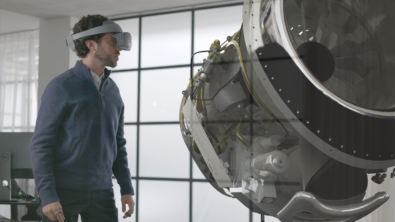First steps to the future car travel experience

If the future of the car travel experience includes customizable, diverse travel, what’s happening in the marketplace that shows the first sign of this trend?
The interior will no longer be defined by traditional elements such as leather seats, a sunroof or even “premium trim.” Instead, the way we think of interiors will be completely different as we reach a new paradigm of unlimited possibilities in what it means to travel in a car.
Industry leaders are presenting their ideas for what this could look like at tradeshows such as CES, which displays where interiors are headed in the future. Even in the early stage, we see vehicles as diverse as casinos or grocery stores on wheels.
In this series, I gain insight about what this future could look like from Paige Kassalen, a future of mobility market analyst at Covestro, a global producer of advanced polymers and high-performance plastics. Paige and I previously discussed how future interiors could look, customized travel experiences and materials’ role in future car travel experiences. Here, we discuss the development of unparalleled travel experiences aligning with people’s wants and needs.
Edward Bernardon: In your role as a mobility market analyst, what vehicles have you seen out there leading the charge in realizing these futuristic interiors that provide exciting experiences?
Paige Kassalen: CES is a great show where you’re able to see many concept vehicles. A vehicle that stood out to me this past year was a car that Toyota displayed in their booth.
I can’t remember the exact name of it, but it was a large, polycarbonate square on wheels, and the images projected across the screen were portraying various experiences that that future vehicle could include. It displayed some fun ideas like a casino on wheels, or a restaurant on wheels and a luxury hotel on wheels: different needs that mobility solutions will be used for, rather than just getting someone from point A to point B. It could be your hotel room or a place for you and your friends to hang out before you go to a bar.
That prototype aligns well with some of the things that we’re looking into at Covestro. It’s about the experience in the future, and understanding the challenge with what experiences are feasible and what experiences people want.

Edward Bernardon: Do you think that by having the capability of developing these experiences, coupled with autonomy, you could have a vehicle bring an experience to you? You could enjoy it in a stationary mode. Have you thought much about the mix in-between?
Also, will it change how we experience different things at our homes brought to us ― a barbecue car, or whatever it might be?
Paige Kassalen: I read an article recently about a grocery store on wheels. This articles relates to how mobility and autonomous vehicles will provide solutions that align well with helping the world and many of those United Nation’s sustainable development goals.
Instead of people having to drive several miles to get the fresh produce they need, the vehicle brings that to the neighborhood. It enables a lack of hunger. People might not get into the vehicle, but the vehicle can deliver those solutions to them.
The future car and its surrounding infrastructure will provide a customizable, affordable travel experience. These experiences will significantly impact our daily lives in work and play. Smaller vehicles will be used for personal transport or expanded for family travel, while larger vehicles, or pods, will be used for mass commuting or to host a meeting.
Ease of reconfiguration will enable niche providers to create specialized pod experiences. Experienced startups will respond to niche demands for unique travel experiences, such as Italian lessons while enjoying wine and cheese, speed dating for a quick 20 minute trip across town, game cars for gambling or group pods tailored to connect users based on hobbies or political views.
The possibilities will be as varied as the users themselves, just as today the internet provides similar and profound variation of sites and exploration.
This concludes the fourth part of our series on autonomous vehicle interiors, a discussion with Paige Kassalen, of Covestro. In part five, we’ll complete our discussion on car materials and the future of customizable travel experiences.
About the author
Edward Bernardon is vice president of strategic automotive initiatives for the Specialized Engineering Software business segment of Siemens PLM Software, a business unit of the Siemens Industry Automation Division. Bernardon joined the company when Siemens acquired Vistagy, Inc. in December, 2011. During his 17 year tenure with Vistagy, Bernardon assumed the roles of vice president of sales, and later business development for all specialized engineering software products. Prior to Vistagy, Bernardon directed the Automation and Design Technology Group at the Charles Stark Draper Laboratory, formerly the Massachusetts Institute of Technology (MIT) Instrumentation Laboratory, which developed new manufacturing processes, automated equipment and complementary design software tools. Bernardon received an engineering degree in mechanical engineering from Purdue University, and later received an M.S. from the Massachusetts Institute of Technology and an MBA from Butler University. He also holds numerous patents in the area of automated manufacturing systems, robotics and laser technologies.


